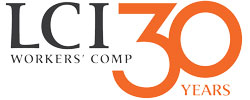Guest Contributor: Jerelyn Madere – Business Continuity Consultant, Louisiana Small Business Development Center, Greater New Orleans Region
Since you live in Louisiana, you’ve probably devised some sort of “disaster plan” for floods, hurricanes, or tornadoes – whether to evacuate or not, when and where to go, and what to take with you. But is your plan adequate to ensure that your business can survive the disruption?
What Makes Your Business Run?
If your business assets include real property, equipment, or inventory, you’ve probably purchased insurance protection. If your business relies on forms, contracts, and other documents, you surely have hard copies stored off-site or electronic copies on a remote server or flash drive. Congratulations! You’ve taken care of the “stuff” that you consider critical to your operations.
But, the unnerving fact is that it isn’t necessary for you to suffer physical damage for your business to be ruined. What REALLY makes your business run are people: employees, customers, and suppliers. Nevertheless, the human element is often overlooked in the disaster preparedness plan.
In the wake of a disaster, communication is the number one factor for business survival. To be effective, however, you must communicate before a disaster strikes, so you don’t lose your audience during or after the event! Here are twelve things you can do so you’ll be Ready for Anything:
Immunize Your Business Against Employee Absenteeism And Presenteeism
- Maintain current emergency contact information and probable evacuation destination(s) for key employees. Establish a protocol for employees to notify you of their location and status, and stay in touch.
- If key employees can perform critical functions from a remote location, be sure to provide the ways and means to do so.
- Develop depth in your organization, and minimize the impact of absenteeism, by cross-training others to perform certain vital functions and pre-delegating authority.
- Assist your employees in developing their personal and family emergency plans.
Presenteeism refers to workers who come to work, but are not fully functioning due to “life issue” distractions. Employees won’t focus on your business or your priorities if they are concerned about their families, property or insurance claims.
Safeguard Your Competitive Edge And Your Customer Base
- Maintain current contact information for key customers, including cell phone and email. Use it regularly as part of your marketing and customer service program.
- Let your customers know that you are prepared; use your plan as a demonstration of customer care. Keeping customers through reliable service is cheaper than trying to lure “deserters” back after the fact.
- Use your website, blog, Facebook, or other social media to post important messages and to keep in touch with customers, suppliers, and employees during and after the event.
- If you sustain property damage or other recovery delays beyond your control, post updates that communicate positive steps being taken.
Build Resilience Into Your Supply Chain
- Maintain current vendor information, including primary and alternate contacts, account numbers, and a description of the products or services the vendor provides.
- Have alternate suppliers and place periodic orders to maintain active status; let them know you will count on them if your primary vendor is unavailable.
- If your business requires shipping (to you or to your customers) establish alternate means of delivery.
- Encourage continuity planning. Share your knowledge and experience!
